Abstract
Constitutive β-glucosidases from Saccharomyces fragilis (Y-18) and S. dobzhanskii (Y-19) precipitated at the same concentration of ammonium sulfate. The partially purified enzymes had similar activation energies, molecular weights, affinities for certain natural and synthetic β-glucosides, and optimal pH values for substrate hydrolysis, and they were stable over approximately the same pH range. The enzymes, however, could be clearly distinguished by other criteria. Affinities of the synthetic, sulfur-containing β-glucosides for Y-18 enzyme were many times greater than for Y-19 enzyme. The latter enzyme was more resistant to heat. The two enzymes eluted from diethylaminoethyl cellulose at different concentrations of sodium chloride. In precipitin tests, homologous enzyme-antisera systems were highly specific. The β-glucosidase synthesized by a hybrid, S. fragilis × S. dobzhanskii (Y-42), was unique. Characterization of this enzyme produced values which were intermediate to those for the enzymes from the parental yeast strains. Heat-inactivation slopes and Lineweaver-Burk plots for the Y-42 enzyme were anomalous. It is suggested that hydrolytic activity in Y-42 preparations is due to a spectrum of hybrid enzyme molecules composed of varying amounts of two distinct polypeptides. It is further suggested that these polypeptides may be identical to those synthesized by the parental Y-18 and Y-19 yeast strains.
Full text
PDF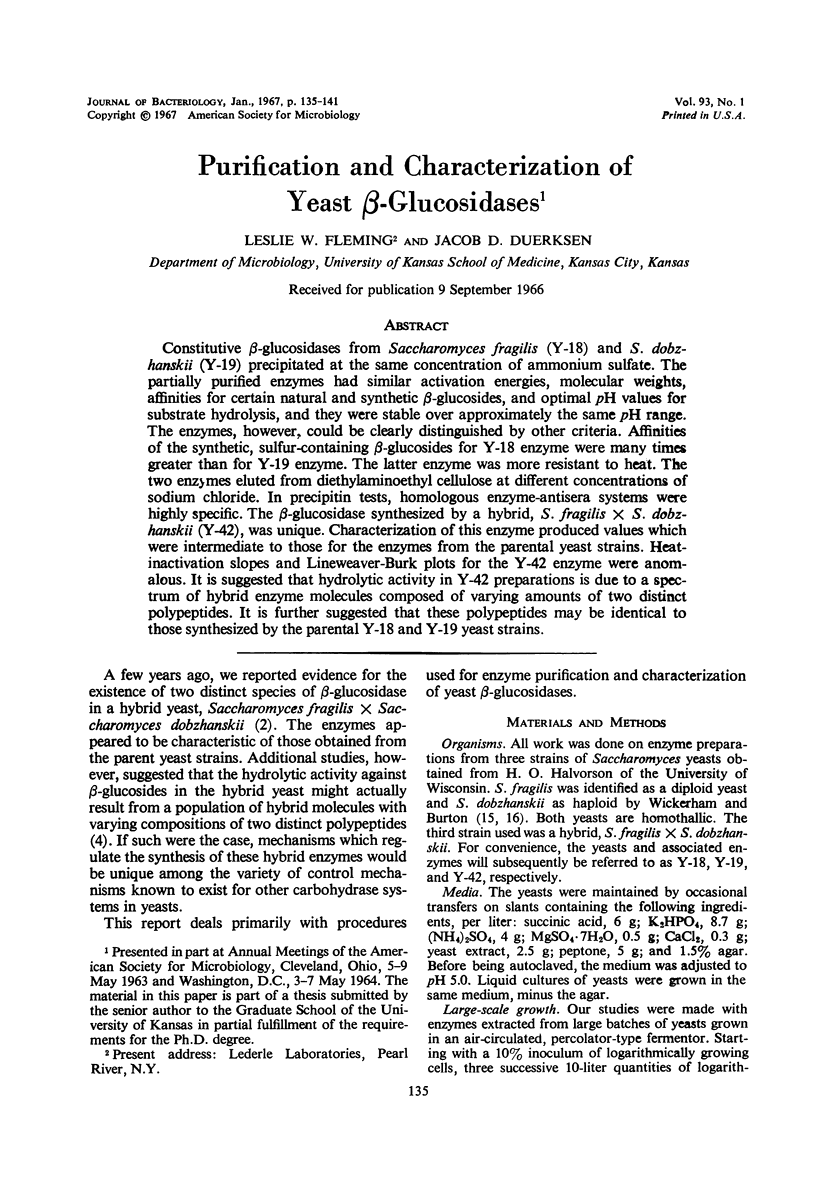
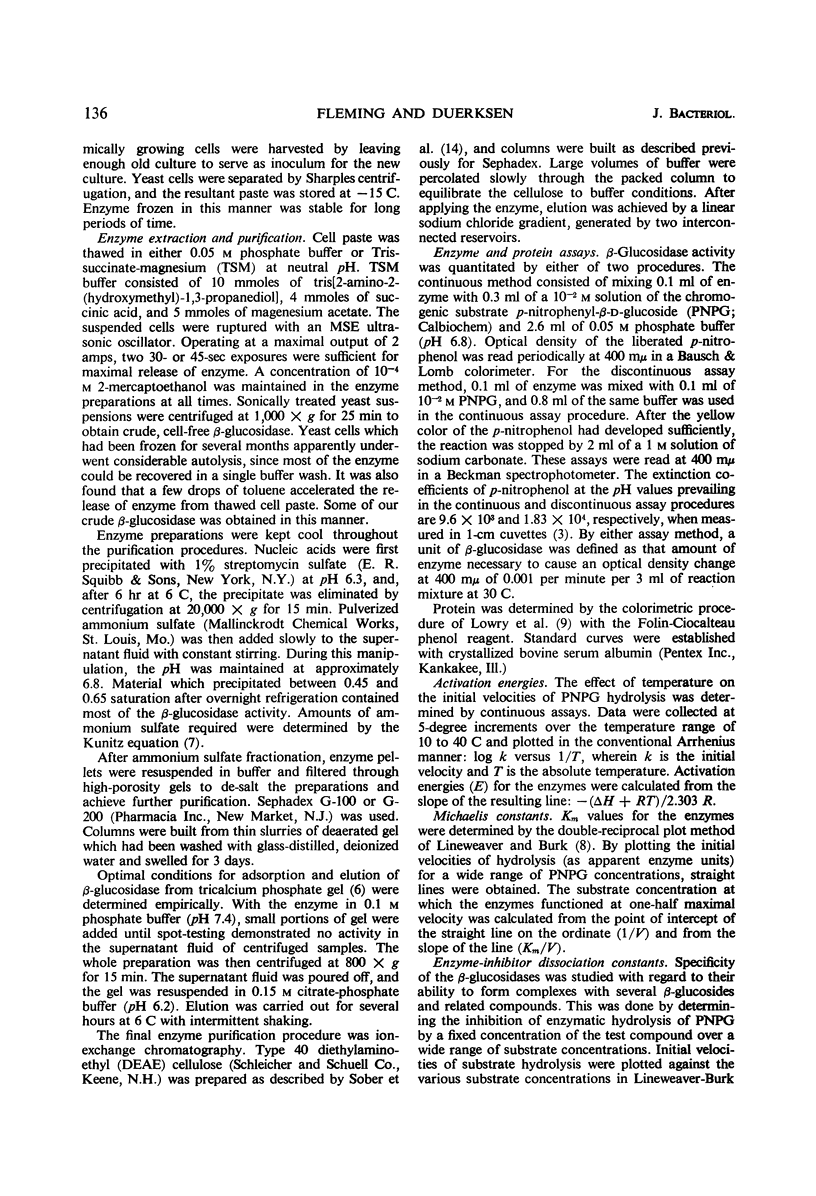
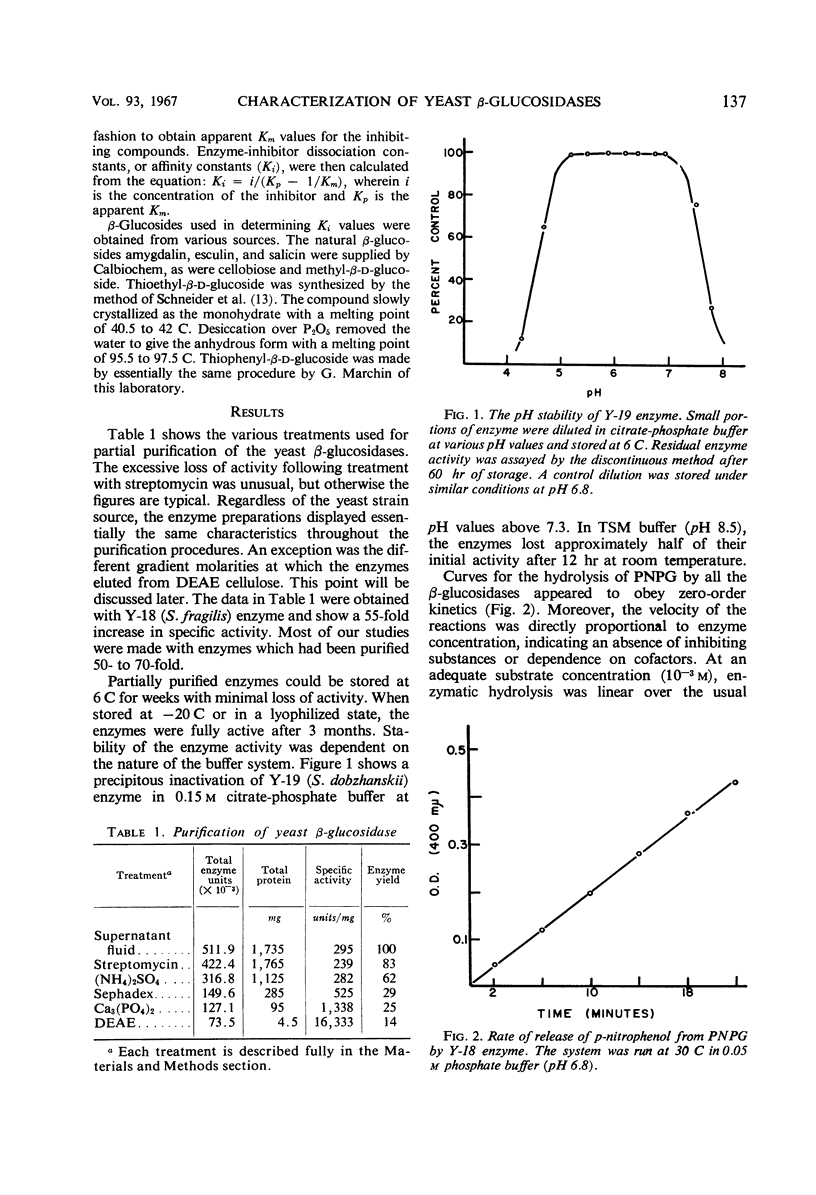
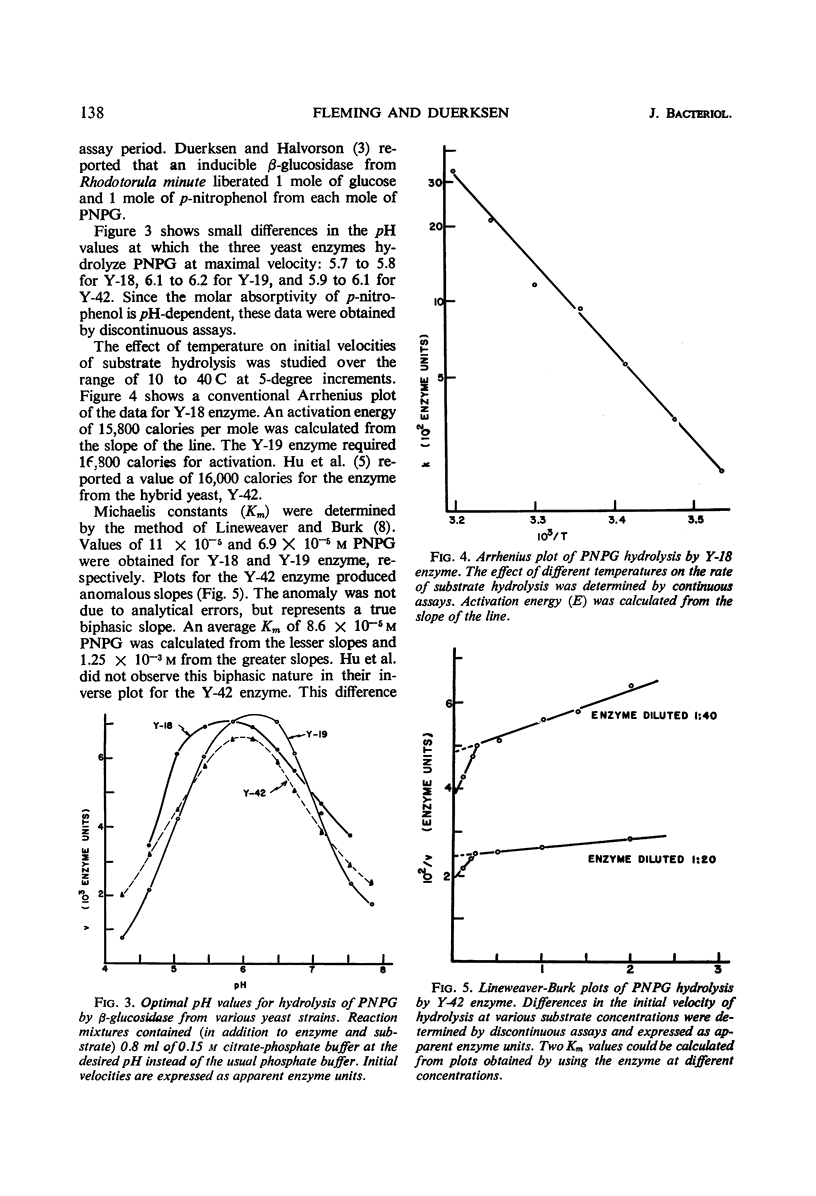
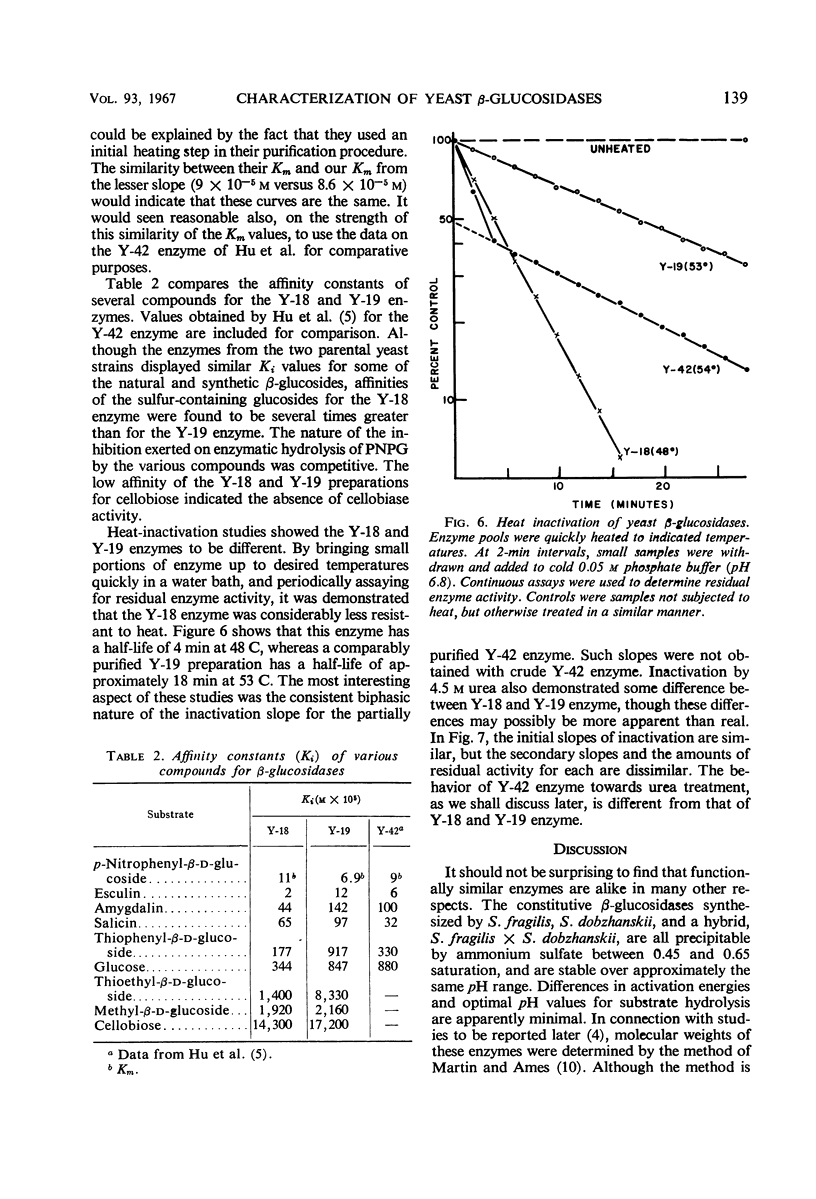
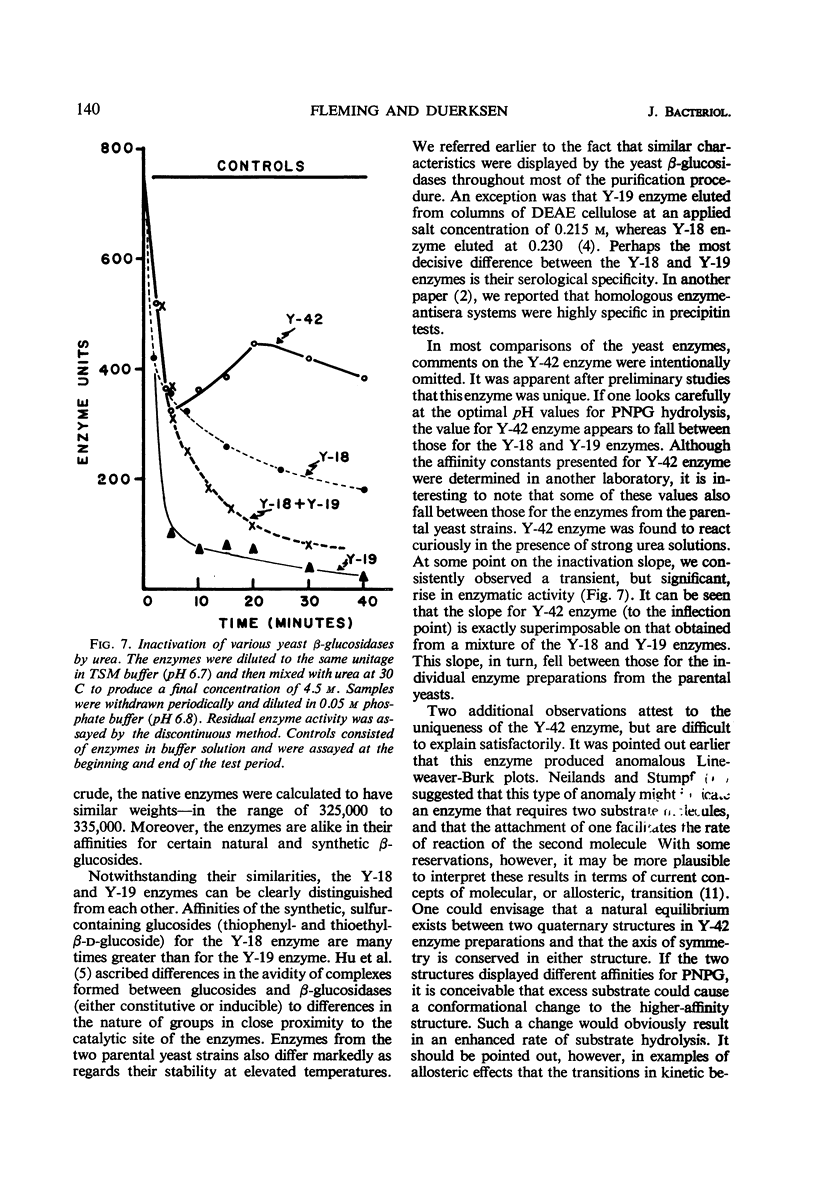

Selected References
These references are in PubMed. This may not be the complete list of references from this article.
- Cline A. L., Hu A. S. Some physical properties of three sugar dehydrogenases from a pseudomonad. J Biol Chem. 1965 Nov;240(11):4498–4502. [PubMed] [Google Scholar]
- DUERKSEN J. D., HALVORSON H. Purification and properties of an inducible beta-glucosidase of yeast. J Biol Chem. 1958 Nov;233(5):1113–1120. [PubMed] [Google Scholar]
- Fleming L. W., Duerksen J. D. Evidence for multiple molecular forms of yeast beta-glucosidase in a hybrid yeast. J Bacteriol. 1967 Jan;93(1):142–150. doi: 10.1128/jb.93.1.142-150.1967. [DOI] [PMC free article] [PubMed] [Google Scholar]
- HU A. S., EPSTEIN R., HALVORSON H. O., BOCK R. M. Yeast beta-glucosidase: comparison of the physical-chemical properties of purified constitutive and inducible enzyme. Arch Biochem Biophys. 1960 Dec;91:210–218. doi: 10.1016/0003-9861(60)90492-6. [DOI] [PubMed] [Google Scholar]
- KUNITZ M. Crystalline inorganic pyrophosphatase isolated from baker's yeast. J Gen Physiol. 1952 Jan;35(3):423–450. doi: 10.1085/jgp.35.3.423. [DOI] [PMC free article] [PubMed] [Google Scholar]
- LOWRY O. H., ROSEBROUGH N. J., FARR A. L., RANDALL R. J. Protein measurement with the Folin phenol reagent. J Biol Chem. 1951 Nov;193(1):265–275. [PubMed] [Google Scholar]
- MARTIN R. G., AMES B. N. A method for determining the sedimentation behavior of enzymes: application to protein mixtures. J Biol Chem. 1961 May;236:1372–1379. [PubMed] [Google Scholar]
- MONOD J., WYMAN J., CHANGEUX J. P. ON THE NATURE OF ALLOSTERIC TRANSITIONS: A PLAUSIBLE MODEL. J Mol Biol. 1965 May;12:88–118. doi: 10.1016/s0022-2836(65)80285-6. [DOI] [PubMed] [Google Scholar]
- WICKERHAM L. J., BURTON K. A. Hybridization studies involving Saccharomyces fragilis and Zygosaccharomyces dobzhanskii. J Bacteriol. 1956 Mar;71(3):296–302. doi: 10.1128/jb.71.3.296-302.1956. [DOI] [PMC free article] [PubMed] [Google Scholar]
- WICKERHAM L. J., BURTON K. A. Hybridization studies involving Saccharomyces lactis and Zygosaccharomyces ashbyi. J Bacteriol. 1956 Mar;71(3):290–295. doi: 10.1128/jb.71.3.290-295.1956. [DOI] [PMC free article] [PubMed] [Google Scholar]


